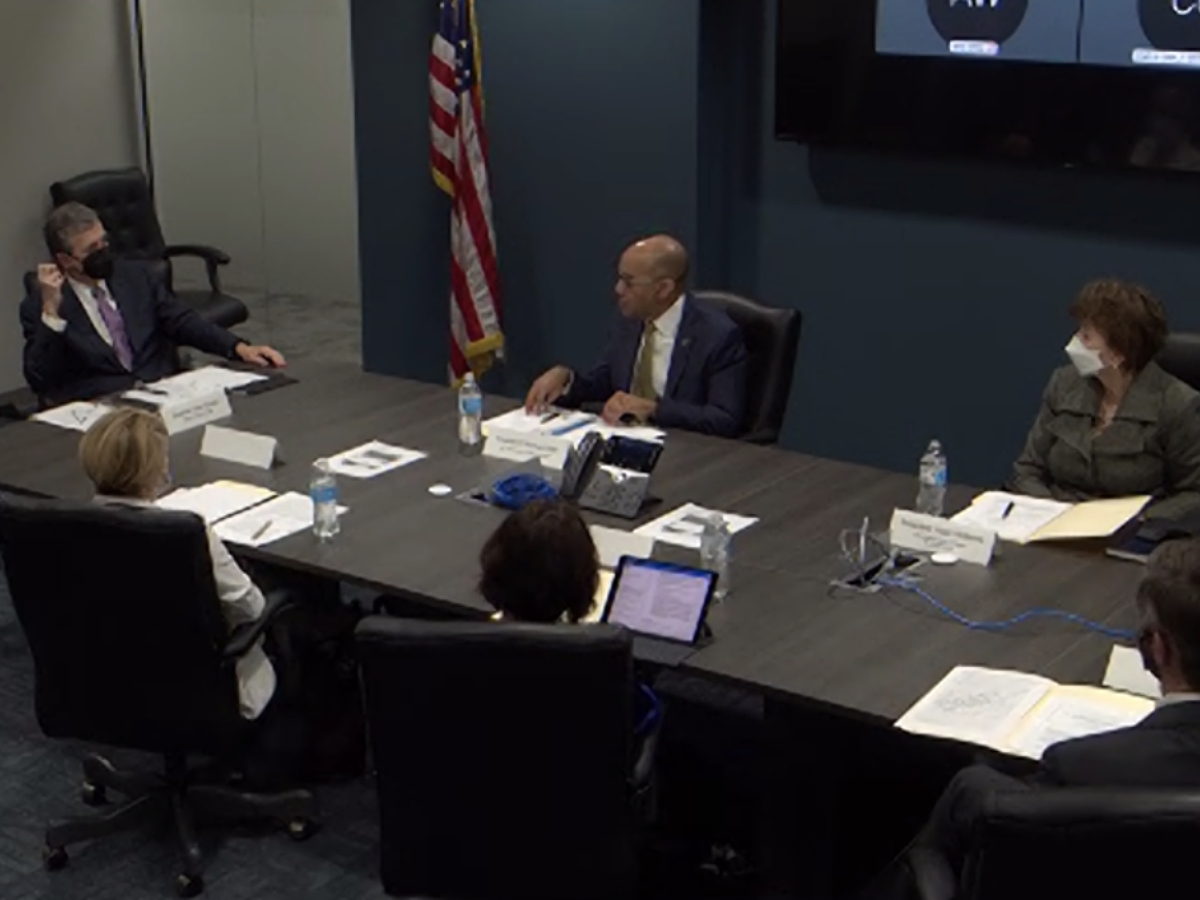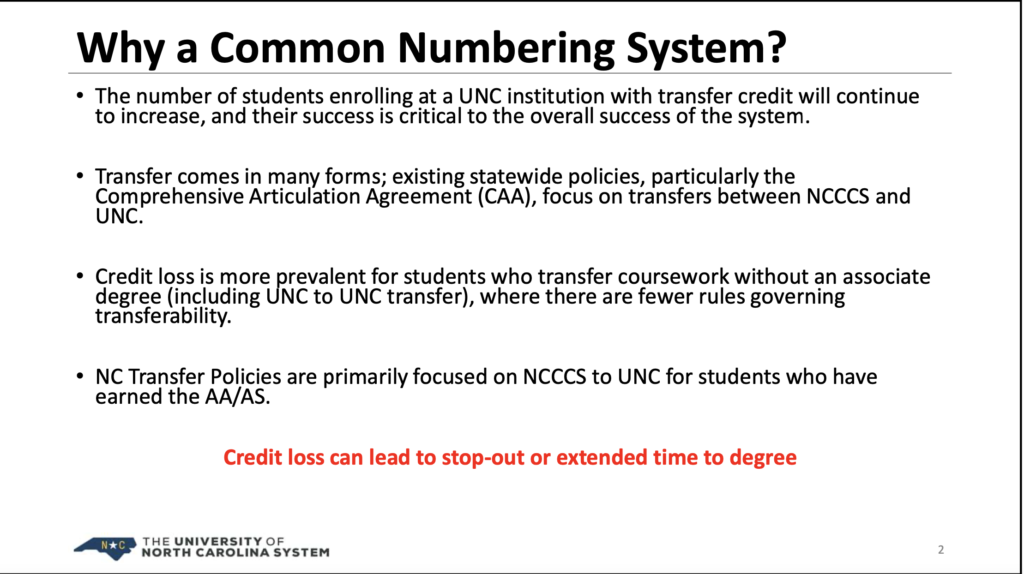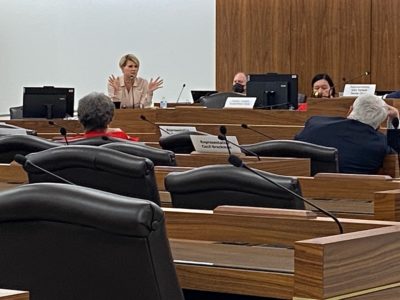

|
|
Gov. Roy Cooper signed an executive order Tuesday creating a governance board for the North Carolina Longitudinal Data System (NCLDS). The order, signed during Cooper’s education cabinet meeting, outlines how the new board will be structured and what its duties will be.
The NCLDS is a “system of systems” that connects data across agencies (like early childhood, K-12, postsecondary education, and the workforce) to track how students are doing from when they enter the early childhood system through their participation in the workforce. Ideally, as a better-linked and targeted data system, NCLDS could help support evidence-based policymaking.
Geoff Coltrane, Cooper’s senior education adviser, gave an overview of NCLDS during the meeting. He recapped for cabinet members their previous endorsement of four key steps for the system in 2021, including the establishment of a governance board.
Another step was the hiring of an executive director to oversee the system. According to Coltrane, the Government Data Analytics Center (GDAC) is currently interviewing candidates and hopes to hire someone in the next month or two.
Cooper said he is excited about making progress with the NCLDS to “help us to better connect students to better paying jobs.”
State Superintendent of Public Instruction Catherine Truitt, an education cabinet member, said that, due to “logistics,” similar efforts in the past have had trouble getting off the ground.
“I would just encourage us all to be cognizant of that so that we don’t stall, as has happened in the past,” she said.
Read the roadmap for the NCLDS here.
UNC common numbering
UNC System President Peter Hans gave the education cabinet an overview of plans for a common numbering system — a way to give courses a shared number to show equivalency at all UNC System schools that offer the course, including undergraduate courses that are most often transferred between UNC System and the North Carolina Community Colleges.
He said that this initiative is important because of the large number of transfer students who lose credits when they transfer into UNC System schools. According to his presentation, losing credits in transfer can lead to stop-out or extra time before a student gets a degree.


In developing the common numbering system, UNC System staff looked at courses most often transferred between North Carolina Community Colleges and UNC System schools, focusing on general education courses. They identified 156 courses that will have “direct equivalency” at all UNC System schools.
That means if a student takes one of those courses at one UNC System school and then transfers to another, that student can be assured that the course credit will transfer, assuming both schools offer the same course.
“We feel like this is going to be a major step forward to transferring students of all kinds,” Hans said.
See the presentation on the common numbering system here.
Community college updates, workforce news
Thomas Stith, president of the state’s community college system, gave an overview of the Associate of Arts and Associate of Science degrees in teacher preparation, which Stith said are now available in 55 of the state’s 58 community colleges.
“We have a critical need for teachers right now in North Carolina, and we have to use every opportunity we can to attract and keep them in the system,” Cooper said during the presentation.
Following Stith’s presentation, the cabinet heard a presentation on the First in Talent: Strategic Economic Development Plan, which has three goals:
- Prepare North Carolina’s workforce for career and entrepreneurial success.
- Prepare North Carolina’s businesses for success by growing and attracting a talented workforce.
- Prepare communities across North Carolina to be more competitive in growing and attracting a talented workforce and businesses.
The plan has four strategies to achieve those goals, including increasing access to early childhood education, leading “the nation in work-based learning engagement,” increasing attainment of high-quality credentials (as outlined in the state’s attainment goal), and increasing “labor force participation through workforce system enhancements to better support populations with barriers to employment.”
Read the workforce update here and the strategic economic development plan here.
During cabinet member updates, Truitt discussed her recently announced “year of the workforce” initiative for 2022, and said that in order to reach the goals in the strategic economic development plan, there are things that the K-12 public school system must do.
“We cannot meet these workforce goals … if K-12 doesn’t start doing things a little bit differently,” she said. “When we look at our data, we are not doing what everyone here is hoping that we’re doing right now.”
The system in the state has a four-year college degree for students as its goal, Truitt said, and those who can’t attain that are relegated “to something else that is not necessarily specific.”
Truitt said that the state “must look at the system of K-12 education starting with our testing and accountability model.”





